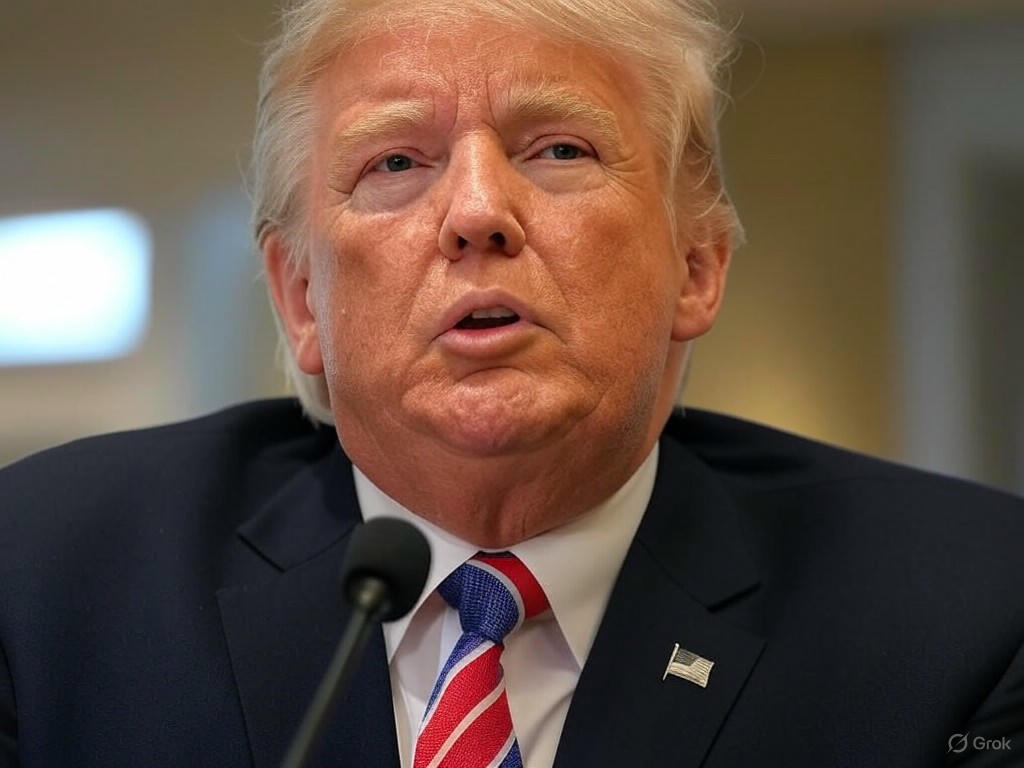In a bold move that has sent ripples through the financial world, former President Donald Trump recently urged the Federal Reserve to slash interest rates dramatically, proposing a reduction equivalent to ten rate cuts. Speaking at a public event on June 19, 2025, Trump argued that such a drastic measure is necessary to stimulate economic growth and provide relief to American businesses and consumers struggling under the weight of high borrowing costs. His remarks have reignited debates about the role of political influence in monetary policy and the potential risks of aggressive rate reductions.
Trump’s call for substantial rate cuts comes at a time when the U.S. economy is grappling with inflationary pressures and uncertainty in global markets. While he did not specify the exact percentage or timeline for these cuts, the suggestion of ten reductions implies a historically unprecedented drop in the federal funds rate, which could lower borrowing costs for everything from mortgages to corporate loans. Proponents of Trump’s stance argue that cheaper credit would encourage investment, spur job creation, and boost consumer spending, particularly in sectors like real estate and manufacturing that are sensitive to interest rates. They believe this could be the jolt the economy needs to avoid a potential slowdown.
However, critics are quick to caution against such an aggressive approach. Economists warn that slashing rates too quickly or too deeply could overheat the economy, leading to runaway inflation and asset bubbles. The Federal Reserve, an independent entity tasked with balancing inflation and employment, has historically resisted political pressure to maintain its credibility and focus on long-term stability. Some analysts suggest that Trump’s comments may be more of a political statement than a realistic policy proposal, aimed at rallying his base by addressing pocketbook issues like high loan payments and stagnant wages. Others worry that undermining the Fed’s autonomy could erode investor confidence and destabilize financial markets.
The timing of Trump’s remarks also raises eyebrows, as the Federal Reserve is already under scrutiny for its recent policy decisions. With inflation still above target levels in many metrics, the Fed has been cautious about easing monetary policy too soon. A drastic rate cut, as Trump suggests, could conflict with the central bank’s current strategy and complicate efforts to achieve a soft landing for the economy. Market participants are now closely watching for any signals from Fed Chair Jerome Powell and other policymakers regarding their response to such public calls for action.
As this debate unfolds, Trump’s push for significant rate reductions underscores the ongoing tension between political agendas and economic realities. While his proposal may resonate with those seeking immediate financial relief, the long-term implications of such a policy shift remain uncertain. For now, the spotlight is on the Federal Reserve, which must navigate these pressures while prioritizing the nation’s economic health. Whether Trump’s vision gains traction or fizzles out, his comments have undeniably sparked a critical conversation about the future direction of U.S. monetary policy.
